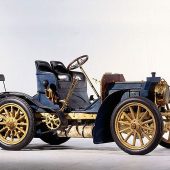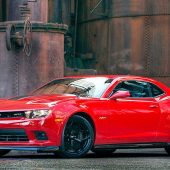Mercedes engine designed by Wilhelm MaybachIn 1900, Wilhelm Maybach designed a completely new engine for the new Daimler 35 hp Mercedes model. With a bore/stroke ratio of 116 x 140 mm, the engine had a total displacement of 5918cc and output of around 35 hp. The horizontally divided crankcase was for the first time made from aluminium. The cylinders, made in pairs from gray cast iron, featured cylinder heads which formed part of the castings, unlike the removable ones used in the earlier designs.
For the main bearings, Maybach used magnalium, an aluminum alloy containing five percent magnesium. The intake valves which until then had been designed as ‘snifting’ valves and opened by the vacuum pressure inside the engine, were now controlled by a camshaft. The non-encapsulated camshafts to the left and right of the crankcase were driven by an open toothed-gear power take-off on the flywheel side.
Via a gear set arranged in its center, the exhaust camshaft drove the low-voltage ignition magnets and a water pump for improved cooling efficiency, while a further gear set at the front end drove a small fan behind the radiator. Another new feature was that each cylinder pair had its own separate carburetor. In the range between 300 and 1000 revolutions, engine speed was controlled via a lever on the steering wheel.
The 35 hp engine provided smooth operation, stable idling and good acceleration. These engine charac¬teristics were hardly believed possible at the time.









